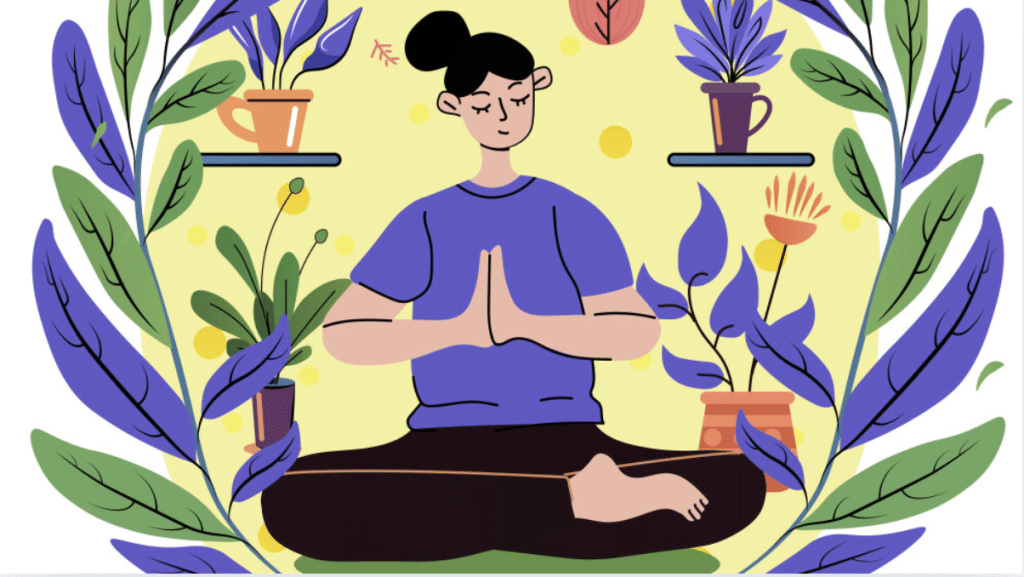Feeling tired, stressed, or just a little off lately? I get it, I’ve felt the same more times than I can remember. With everything life throws your way, it’s easy to put your own well-being on the back burner. That’s why I put together this simple guide on ways to wellness.
I’ll walk you through small, everyday habits that can improve your physical health, lift your mood, and help you feel more grounded.
From eating well and moving your body to managing stress and staying connected with others, it’s all about finding what truly works for you. Let’s make you feel better, inside and out.
Ways to Wellness: A Holistic Approach to Better Health
Achieving optimal wellness requires a balanced approach that incorporates physical activity, healthy eating, mental health practices, and social connections.
By combining these elements, you can improve your overall well-being and reduce the risk of chronic diseases. Physical activity improves cardiovascular health, while a balanced diet nourishes both the body and the mind.
Mental health practices, such as mindfulness, help manage stress, and strong social connections provide emotional support.
These interconnected aspects work together to promote a healthier, more fulfilling life, addressing the mind, body, and spirit.
Key Practices for Achieving Wellness

These simple yet powerful habits can help you build a healthier lifestyle. Start with the basics to support your body, mind, and overall well-being,
1. Be Physically Active
Regular exercise improves physical health, boosts mental well-being, and helps reduce the risk of chronic diseases like heart disease and diabetes.
Exercise for Health
Exercise benefits both body and mind. Regular physical activity helps strengthen the heart, improve circulation, boost mood, and reduce anxiety. It improves energy levels, supports immune function, and lowers stress.
Physical activity also promotes better sleep, reduces symptoms of depression, and improves cognitive function, making it a key component for maintaining overall wellness.
Research Backing: According to the Mayo Clinic, physical activity helps prevent diseases such as diabetes and can improve life expectancy by 3–5 years.
Types of Exercise
Different types of exercise offer various benefits:
- Walking: A low-impact, easy way to improve cardiovascular health.
- Yoga: Combines strength, flexibility, and relaxation for mental clarity.
- Strength Training: Builds muscle, boosts metabolism, and strengthens bones.
- Cardio: Increases endurance, reduces stress, and helps with weight management.
2. Healthy Eating Habits
Eating a balanced diet is vital for maintaining energy, managing weight, and supporting overall health.
Importance of a Balanced Diet
A balanced diet fuels the body with essential nutrients, vitamins, and minerals. Proper nutrition supports healthy growth, repair, and immune function.
It can help prevent chronic conditions such as obesity, diabetes, and heart disease. A well-rounded diet provides the energy needed for daily activities and promotes long-term health by reducing the risk of nutrient deficiencies.
Actionable Tip: Aim to fill half your plate with fruits and vegetables, a quarter with lean protein, and a quarter with whole grains.
Mindful Eating
Mindful eating involves paying full attention to the food you’re eating, savouring each bite, and recognising hunger and fullness cues. This practice can help prevent overeating, improve digestion, and enhance the enjoyment of meals.
Try eating slowly, reducing distractions, and focusing on the taste, texture, and aroma of food to foster a healthier relationship with eating and promote long-term wellness.
3. Mental Health and Stress Management
Taking care of your mental health and managing stress are essential components of overall wellness.
Reducing Stress Through Mindfulness
Mindfulness is the practice of staying present and focused on the moment, without judgment. It helps reduce stress by allowing you to manage thoughts and emotions more effectively.
Techniques such as deep breathing, meditation, and body scans can calm the mind, reduce anxiety, and improve emotional well-being. Practicing mindfulness daily can improve focus and help you respond to challenges with greater ease.
Expert Opinion: According to Dr. Jon Kabat-Zinn, founder of Mindfulness-Based Stress Reduction (MBSR), mindfulness practices have been shown to reduce symptoms of anxiety, depression, and chronic pain.
The Role of Relaxation Techniques
Incorporating relaxation techniques like meditation, progressive muscle relaxation, or deep breathing exercises into your routine can significantly reduce stress. These practices promote relaxation, improve mental clarity, and improve emotional resilience.
Start by dedicating a few minutes daily to these exercises, and gradually increase the time to experience long-term benefits, including improved mood and reduced anxiety.
4. The Importance of Sleep and Recovery
Sleep and recovery are essential for overall well-being. Here are a couple of things to keep in mind:
- Sleep supports overall health, allowing the body to repair, recharge, and maintain cognitive function.
- Quality sleep improves mood, boosts immune function, and improves memory and focus.
- Adequate recovery time helps reduce the risk of chronic diseases and promotes mental clarity.
- Sleep deprivation can lead to weight gain, increased stress, and impaired decision-making.
- Prioritising sleep and recovery is crucial for maintaining energy, emotional balance, and long-term wellness.
Actionable Tip: Practice good sleep hygiene by maintaining a consistent sleep schedule and creating a relaxing bedtime routine.
Wellness Beyond the Body: Financial and Social Well-Being

Financial health plays a crucial role in maintaining overall well-being. Let’s find out how planning for financial health can significantly impact both your physical and mental wellness.
Financial Wellness
Planning for financial health is essential to reduce stress and achieve a secure future. Proper budgeting, saving, and investing lead to less financial strain, which in turn promotes emotional stability.
Financial security allows you to focus on personal wellness goals, such as better healthcare, healthier habits, and improved quality of life, fostering overall well-being.
Building Healthy Relationships
Healthy relationships are crucial for emotional support, improving mental well-being, and resilience.
Maintaining connections with family, friends, and community helps combat loneliness and provides a support system during challenging times.
Positive relationships promote self-worth, reduce stress, and encourage healthier behaviours, fostering a sense of belonging and contributing to long-term wellness.
How to Start Your Wellness Path
Starting your wellness journey is about creating a plan that aligns with your goals and helps you stay motivated. Let’s look at how to make that plan work for you.
Creating a Personalised Wellness Plan
To start your wellness path, identify your personal health goals, whether they’re physical, emotional, or mental. Break down larger goals into smaller, achievable steps.
Choose activities that fit your lifestyle, such as regular exercise, a balanced diet, or mindfulness practices. Ensure your plan is realistic and flexible, so it adapts as you progress toward your wellness aspirations.
Actionable Tip: Use a wellness planner or app to track your goals and keep yourself accountable.
Tracking Your Progress
Regularly track your wellness goals to stay motivated and focused. Use a journal or an app to monitor your physical activity, diet, sleep, and mental health.
Take time to reflect on your achievements, no matter how small, and adjust your plan if needed. Tracking provides insight into your progress and can help you stay committed to your wellness journey over time.
Product Recommendations: Consider using apps like MyFitnessPal for tracking diet and exercise, or Headspace for mindfulness and meditation.
Conclusion
Taking care of your health doesn’t have to feel like a huge task. I’ve learned that the hard way. I gave you a few practical ways to wellness, like staying active, eating better, managing stress, and building strong connections.
Now it’s your turn. Think about one area you’d like to start with and take a small, doable step. Even the tiniest change can lead to big shifts in how you feel day to day.
Just remember, wellness is a path to walk on, not a race. Be kind to yourself and celebrate the progress you make.
Want more easy tips for living a balanced, healthy life? Take a look at my other blogs for simple advice that fits into your everyday routine.









